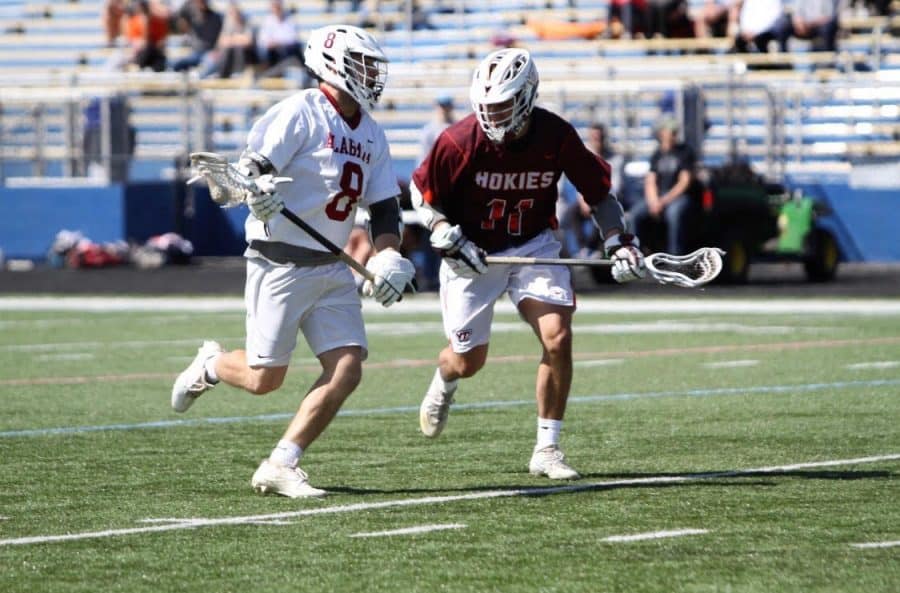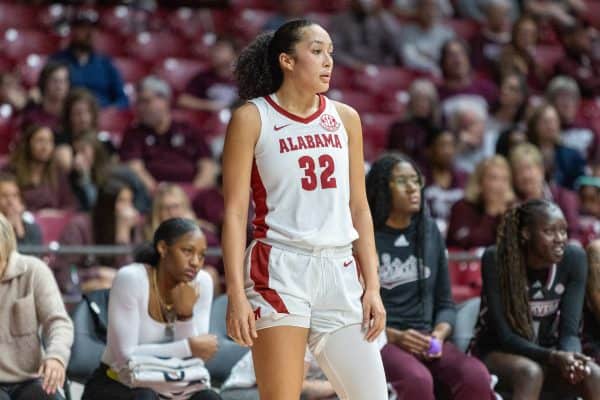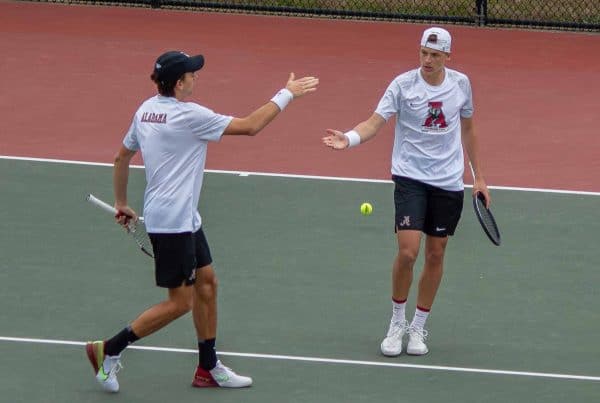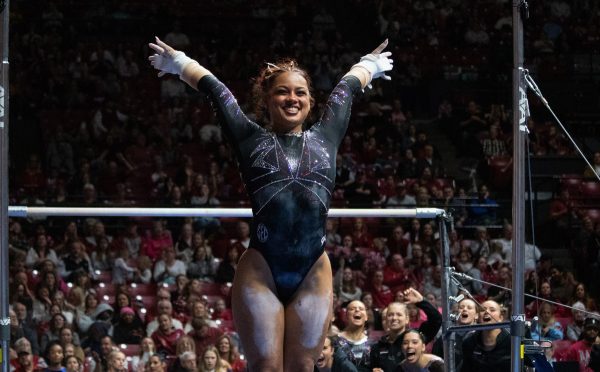Men’s lacrosse pushes through club struggle
April 8, 2019
The famous quote “you get out what you put in” does not always ring true to life’s harsh realities, and the Alabama men’s lacrosse team knows that all too well.
A club team in a sport known for its competition, Alabama is looking to expand upon last season’s success to the highest goal possible: to become Division I.
“The talent is there, and we have that already, but it’s an organizational issue at this point,” said Justin Alexandre, a junior majoring in construction engineering.
While Division I may seem like a far-fetched idea for a team that doesn’t have its own stadium, or even its own practice field, but transfer teams like Michigan prove that club lacrosse can find a home in the big leagues if the whole team buys in. In this case, the team embodies everyone from players, coaches, to most importantly, the university’s athletic department.
Before Alabama can make that leap, the team must do the two things that they can actually control: win and remain patient.
Until then, the team will have to endure a limited practice schedule, limited resources and limited finances. Essentially, club lacrosse at the University is a program that has a Division I mindset without the necessary infrastructure to achieve such a goal.
Like all club teams on campus, the team must go through the Student Recreation Center for travel forms and practicing schedules. With that comes those unfortunate stormy weeks where the team may not even be able to practice if the fields are deemed unsafe.
“We want to point to a turf field and say, ‘That’s ours,’ but that is just not our situation right now,” team president and mechanical engineering major Mitch Ross said.
Ross said that the team has even struggled in past seasons getting its lines painted for regulation because communicating outside of an official athletic department isn’t always an easy process.
The team’s practice hours have also been cut from last season’s four two-hour practices per week to three hour and 45-minute practices per week. For a squad that has improved in the win column, things such as these make it more difficult for a club team to sell their brand, especially with recruits.
“We are at the mercy of so much,” Ross said. “One of the most popular questions when we recruit guys is ‘where the workout room is’ and for us it’s just the Student [Recreation] Center.”
Nonetheless, the team has done its best at attracting players in a sport that lacks popularity in the South. Out of the 40 players on the team, only one is from the state of Alabama. That has been an issue for club lacrosse, as there are no SEC schools with a Division I program.
However, much like the University, talent doesn’t seem to be an issue for southern universities as a whole. South Carolina, Georgia, Florida State, Clemson and Texas A&M are all in the top-25 rankings for club teams.
For a southern school to go Division I, a team must make the leap of faith.
“It’s hard to gain traction in the South especially because you have football here,” Ross said. “Once we start getting top ranks in our conference and going to the playoffs, that will help us gain recognition and continue to grow each year.”
For that to happen, Alabama must steadily win games for many years to come. Club lacrosse is a difficult platform to gain success as only two teams from each six-team division are able to make the playoffs. Although the Crimson Tide produced a winning record last season, there is still much more room to grow before the athletic department thinks about investing in the team.
“It is a $10 million investment at least with the University because of the facilities and paying the NCAA, along with scholarships,” Aaron Cargas, a junior majoring in advertising, said.
The team is in the midst of humble beginnings, but with a consistent effort between players and coaches Craig Landru and Shane Ryan, who both travel from Birmingham to be with the team, the group wants to make the small steps.
There have been the expected troubles that are inevitable by a program that is student funded, such as the team being financially unable to gather the $30,000 needed for a tournament in Arizona, in which one of the two teams that were expected to play withdrew.
“That trip shows how competitive we are trying to be because we were totally willing to pay 100% before a team backed out,” said Cargas.
Alexandre said ultimately, the team wants to get out there and run, pioneering the change for not just club sports, but lacrosse as a whole.
“The talent is there, so it’s just about growing it,” Ross said. “Growing up, I saw the movement out west in Colorado. When I started playing, it was starting to grow and by the time I left, tournaments would draw hundreds of teams to play.”
When or if the lacrosse trend hits the South, the Crimson Tide is prepared for the taking.











